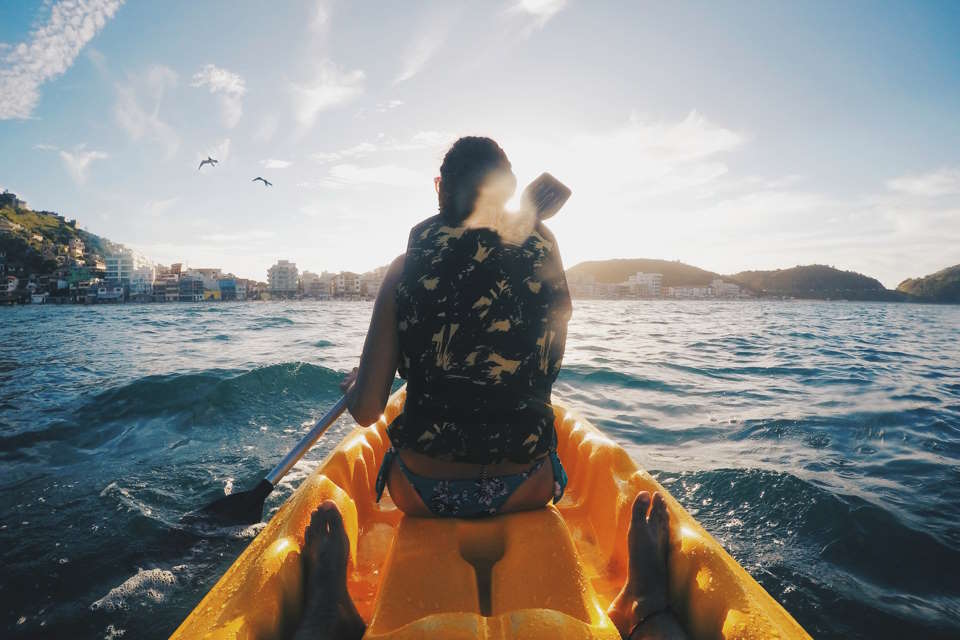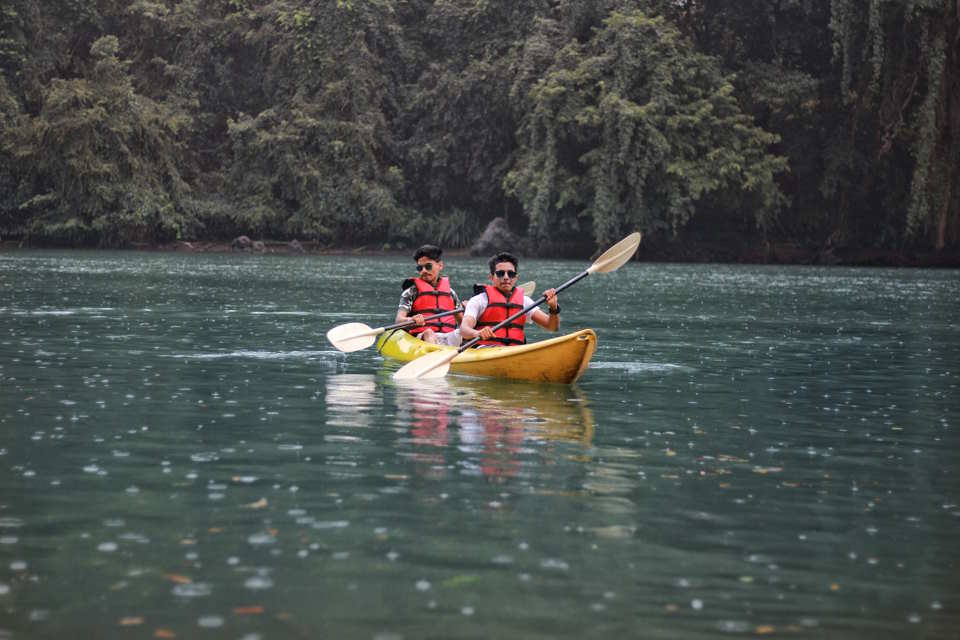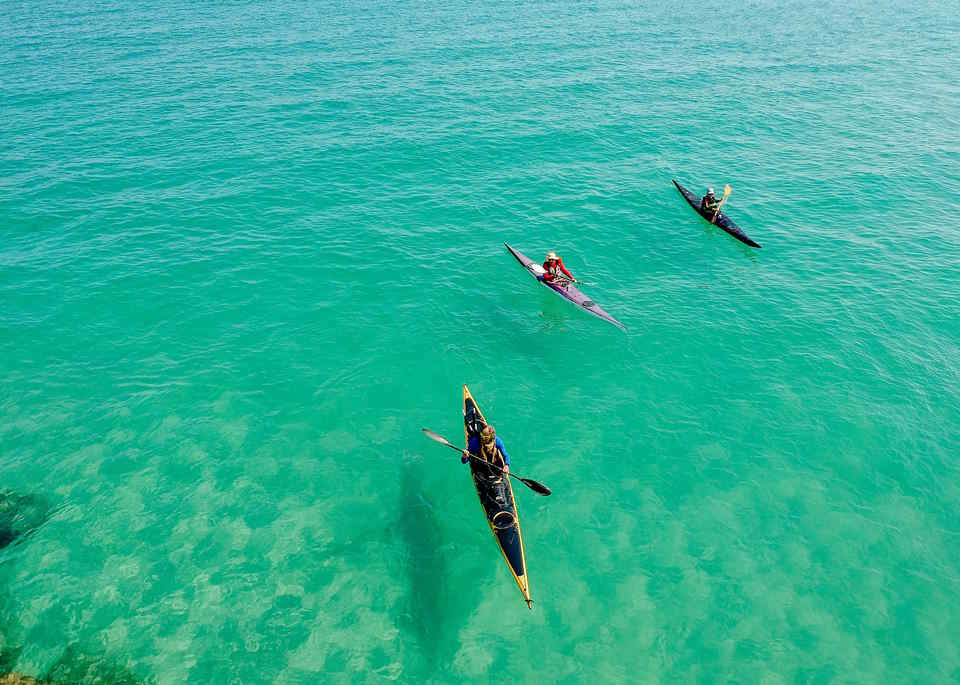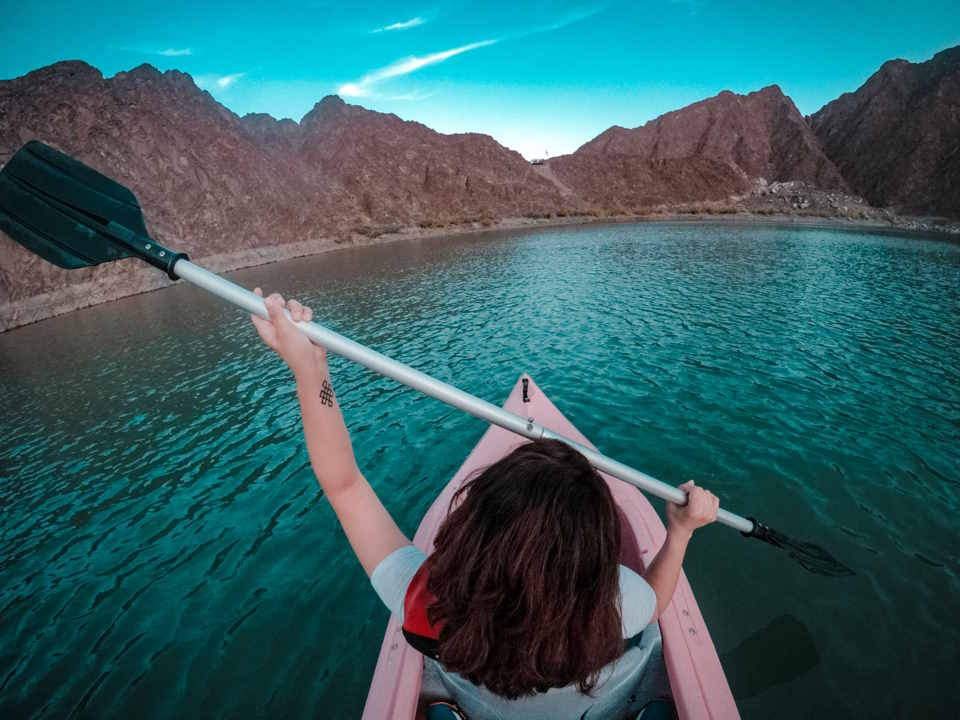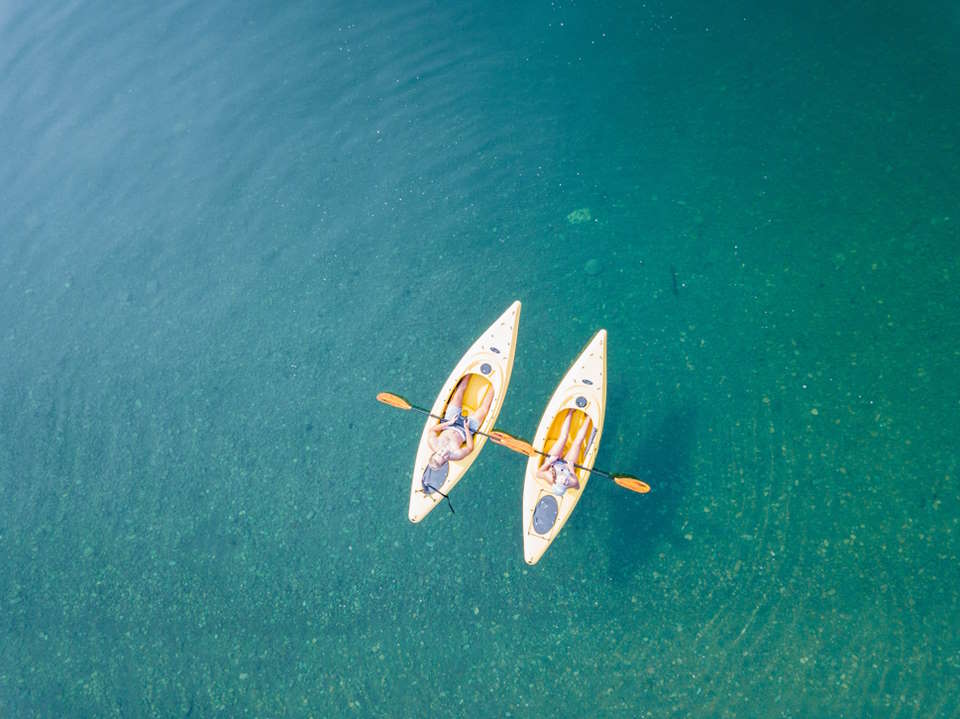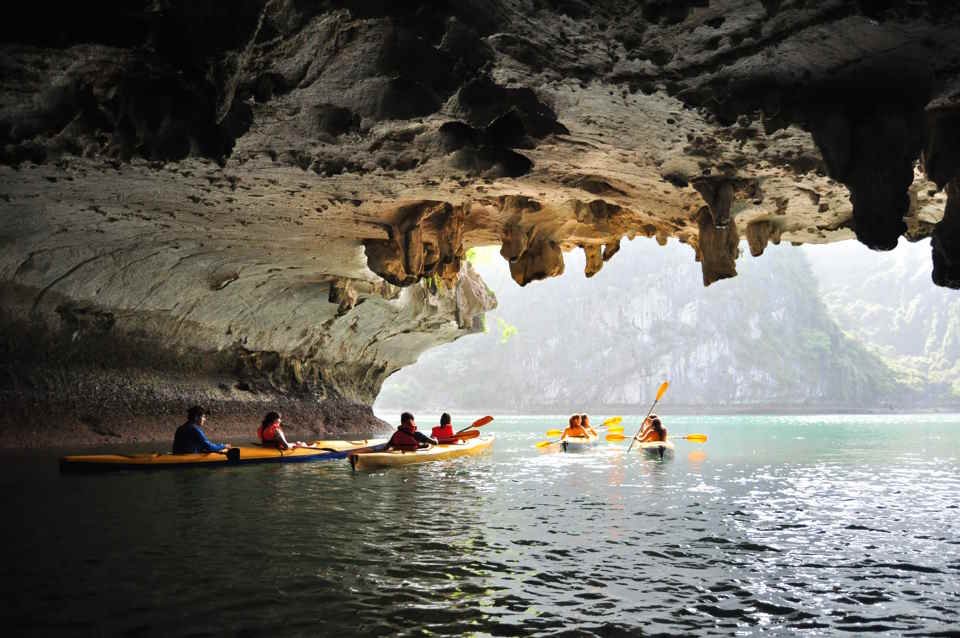Welcome to the place where we’ll be exploring the world of kayaking! Whether you’re a beginner or have some experience, this article will dive into some common questions and misconceptions surrounding this popular water sport. Kayaking can be a thrilling and rewarding activity, but many people wonder just how difficult it may be, especially for beginners. We’ll address the challenges of kayaking, discuss the likelihood of flipping, explore the best age to start, and ultimately answer the question: is kayaking for everyone? So, let’s get started and quench your curiosity about all things kayaking!
Introduction
Kayaking is a thrilling outdoor activity that allows you to explore waterways and enjoy nature from a unique perspective. But one question that often comes to mind before trying kayaking is, “Is it hard?” Well, the answer isn’t as straightforward as a simple yes or no. While kayaking can be a relatively easy and enjoyable experience for some, it can also pose challenges for others, especially those who are new to the sport.
For beginners:
For someone who has never been in a kayak before, the idea of paddling through water might seem intimidating. However, with proper guidance and a willingness to learn, kayaking can be an accessible activity for beginners. Start by taking a beginner’s course or going on guided trips with experienced instructors. They will teach you the basics of kayaking, such as proper paddling techniques and how to maneuver your kayak efficiently. With practice, you will gain confidence and soon find yourself enjoying the serenity of gliding through the water.
Challenges can arise:
While kayaking can be relatively easy to pick up, it’s essential to recognize that challenges can arise, even for more experienced kayakers. Factors like strong currents, choppy waters, or unpredictable weather conditions can make kayaking more demanding. Additionally, the physical aspect of kayaking, such as upper body strength and endurance, can also play a role in determining the difficulty level. However, with proper preparation, safety precautions, and knowing your limits, these challenges can be managed, and kayaking can continue to be an enjoyable experience.
Is Kayaking Hard for a Beginner?
When it comes to trying new things, especially out in the water, it’s natural for beginners to wonder if kayaking is hard. While kayaking can be a challenging activity, especially for beginners, it is certainly possible to learn and enjoy it with the right guidance and mindset. With a bit of practice and some helpful tips, even a beginner can become comfortable and confident on the water in no time.
One of the main factors that determine the level of difficulty in kayaking for beginners is the type of water they choose to paddle on. Calm, flatwater like lakes and slow-moving rivers are ideal for beginners as they offer a more stable and controlled environment. These types of water bodies provide beginners with an opportunity to focus on developing their skills and gaining confidence in their kayaks without the added challenge of strong currents or waves.
Another important consideration for beginners is the choice of the right kayak. Stability is key when starting out, so it’s recommended to choose a wider and more stable kayak rather than a narrower and faster one. A wider kayak offers better initial stability, making it easier for beginners to maintain their balance and stay upright. As beginners gain more experience and confidence, they can gradually transition to narrower and faster kayaks.
- Choose the right equipment:
To ensure a smoother and easier learning experience, it’s crucial for beginners to choose the right equipment. A well-fitting personal flotation device (PFD) is essential in kayaking, as it not only keeps you safe but also provides additional flotation if needed. Opt for a PFD that is designed specifically for kayaking to ensure a comfortable fit and unrestricted movement.
- Take a beginner’s course or seek guidance:
For those who are completely new to kayaking, enrolling in a beginner’s course or seeking guidance from experienced kayakers can be immensely helpful. These courses often cover the fundamentals of kayaking, including proper paddling techniques, safety precautions, and rescue strategies. Learning from a qualified instructor can help beginners build a solid foundation of skills and knowledge, giving them the confidence to navigate the water with ease.
| Keep a few things in mind as a beginner kayaker: |
|---|
| 1. Start in calm waters: As a beginner, it’s best to start kayaking in calm waters such as lakes or slow rivers. This will allow you to practice your skills in a more controlled environment. |
| 2. Take it slow: Don’t rush the learning process. Take your time to develop the necessary skills and gradually progress to more challenging waters as you gain confidence. |
| 3. Practice proper paddling technique: Learning the correct paddling technique from the beginning will make kayaking easier and more efficient. Focus on maintaining a relaxed grip on the paddle and using your torso to generate power rather than just your arms. |
Do Kayaks Flip Easily?
Kayaking can be an exciting and adventurous water sport, but the fear of flipping over can be a concern for many beginners. The stability of a kayak and the likelihood of it flipping over depend on several factors, including the type of kayak, the paddler’s skill level, and the water conditions. Generally speaking, kayaks are designed to be stable and resist flipping, but there are situations where capsizing can occur. Let’s explore some of the key factors that can contribute to kayaks flipping and how you can minimize the risk.
Type of Kayak
There are different types of kayaks available, each with its own characteristics and level of stability. Sit-on-top kayaks, for example, are more stable compared to traditional sit-in kayaks. This is because sit-on-top kayaks have a wider hull and offer more buoyancy, making them less likely to flip over. On the other hand, whitewater kayaks are designed to maneuver quickly through rapids, and while they offer great agility, they tend to have a lower level of initial stability. Understanding the type of kayak you are using is essential for assessing the risk of flipping.
Water Conditions
The water conditions you choose to kayak in can greatly affect the risk of flipping. Calm and flat waters, such as lakes or slow-moving rivers, generally pose a lower risk of capsizing. However, choppy waters, strong currents, or rough waves can increase the likelihood of flipping. It’s important to be aware of the current weather and water conditions before embarking on your kayaking adventure. If you’re a beginner, it’s generally recommended to start in calm waters until you gain more experience and confidence in handling various water conditions.
Paddler’s Skill Level
The paddler’s skill level plays a significant role in the likelihood of a kayak flipping. Beginners who are still getting familiar with the basics of kayaking, such as proper paddling techniques, balance, and control, may be more prone to capsizing. However, with practice and experience, the chances of flipping can be significantly reduced. Taking kayaking lessons from a qualified instructor or practicing in controlled environments, such as calm waters or a pool, can help improve your skills and minimize the risk of flipping over.
- Choose the Right Kayak: Select a kayak that suits your needs and skill level. Consider a more stable sit-on-top kayak if you’re a beginner.
- Check the Water Conditions: Assess the water conditions before setting out on your kayaking trip. Avoid rough waters if you’re not confident in your abilities.
- Improve Your Skills: Take kayaking lessons or practice in controlled environments to enhance your paddling technique and stability on the water.
- Use Proper Safety Gear: Always wear a personal flotation device (PFD) and ensure it fits you properly. This will not only keep you safe but also provide extra buoyancy in case of a capsize.
| Kayak Type | Stability Level |
|---|---|
| Sit-on-top | High initial stability |
| Sit-in | Varies based on design |
| Whitewater | Lower initial stability |
What Is the Best Age to Start Kayaking?
There is no specific age that is considered the best to start kayaking. Kayaking is a versatile water sport that can be enjoyed by people of all ages. Whether you are a young child, a teenager, an adult, or even a senior, kayaking can provide a great outdoor adventure and a fulfilling experience. The key to starting kayaking at any age is to ensure that you have the necessary physical strength, coordination, and safety knowledge.
For young children: It is recommended that children start kayaking under adult supervision and at an appropriate age when they can understand and follow safety instructions. Ideally, children should have developed the necessary motor skills and physical abilities to paddle and maneuver a kayak. This typically occurs around the age of 8 or 9, but it may vary depending on the individual child’s development.
For teenagers and adults: Kayaking can be a fantastic activity for teenagers and adults of all ages. Whether you are in your teens, twenties, thirties, or beyond, starting kayaking can be a great way to stay active, explore nature, and challenge yourself. It’s never too late to learn how to kayak, and with proper guidance and training, anyone can enjoy this water sport.
For seniors: Kayaking can be a wonderful activity for older adults as well. It offers a low-impact exercise that helps improve strength, flexibility, and cardiovascular health. However, it is essential for seniors to take into consideration any physical limitations or health conditions they may have. It is recommended to consult with a healthcare professional before starting kayaking to ensure it is safe and suitable for their individual circumstances.
- Benefits of kayaking at any age:
-
- Kayaking allows you to connect with nature and enjoy the beauty of water bodies.
- It provides an opportunity for physical exercise and outdoor recreation.
- Kayaking can improve mental well-being and reduce stress.
- It is a social activity that can be enjoyed with family and friends.
- Kayaking can be a lifelong hobby that continues to bring joy and adventure.
Is Kayaking for Everyone?
Kayaking is a fantastic outdoor activity that allows individuals to connect with nature while enjoying a thrilling adventure. Many people wonder if kayaking is suitable for everyone, regardless of age, fitness level, or experience. The answer is that kayaking can indeed be enjoyed by people of all ages and skill levels. Whether you are a beginner or an experienced kayaker, there are various types of kayaking activities that cater to different preferences and abilities.
For Beginners:
If you are new to kayaking, you might be concerned about the challenges and difficulties associated with this water sport. However, kayaking can be easily accessible and enjoyable for beginners. There are numerous kayaking schools and guided tours available that provide lessons and support for novice kayakers. These programs offer a safe and controlled environment where beginners can learn essential kayaking techniques, safety precautions, and how to navigate different water conditions.
Is Kayaking Hard?
One common question among potential kayakers is whether kayaking is hard to learn. While there might be a learning curve involved, kayaking does not have to be overly challenging. With proper guidance and practice, most individuals can quickly grasp the basic skills and techniques of kayaking. It is important to start at a comfortable pace, gradually building up your skills and confidence. Remember, even experienced kayak enthusiasts started as beginners.
Adapting to Different Abilities:
One of the great aspects of kayaking is its versatility. There are various types of kayaking activities that cater to individuals with different abilities and preferences. For those who have physical limitations, there are specially designed kayaks and adaptive equipment available that can accommodate their needs. Additionally, some kayaking centers provide guided tours and outings suitable for people with all levels of physical fitness.
- Recreational Kayaking: Recreational kayaking is an ideal option for beginners and those who simply want to enjoy a relaxing time on calm water bodies such as lakes, ponds, or slow-moving rivers.
- Sea Kayaking: Sea kayaking is more suited for those seeking an adventurous experience on open water. It requires more advanced skills and knowledge but can be incredibly rewarding for those who are up for the challenge.
- Whitewater Kayaking: For adrenaline junkies, whitewater kayaking offers an exhilarating experience, navigating fast-moving rivers and rapids. This type of kayaking demands advanced skills, experience, and proper safety measures.
In Conclusion:
Kayaking is a thrilling outdoor activity that can be enjoyed by individuals of all ages and abilities. Whether you are a beginner or an experienced kayaker, there are options available that cater to your skill level and preferences. With the proper guidance, practice, and necessary safety precautions, kayaking can become an enjoyable pursuit for everyone. So grab a paddle, hop into a kayak, and embark on an exciting adventure that will connect you with nature and provide unforgettable memories.


